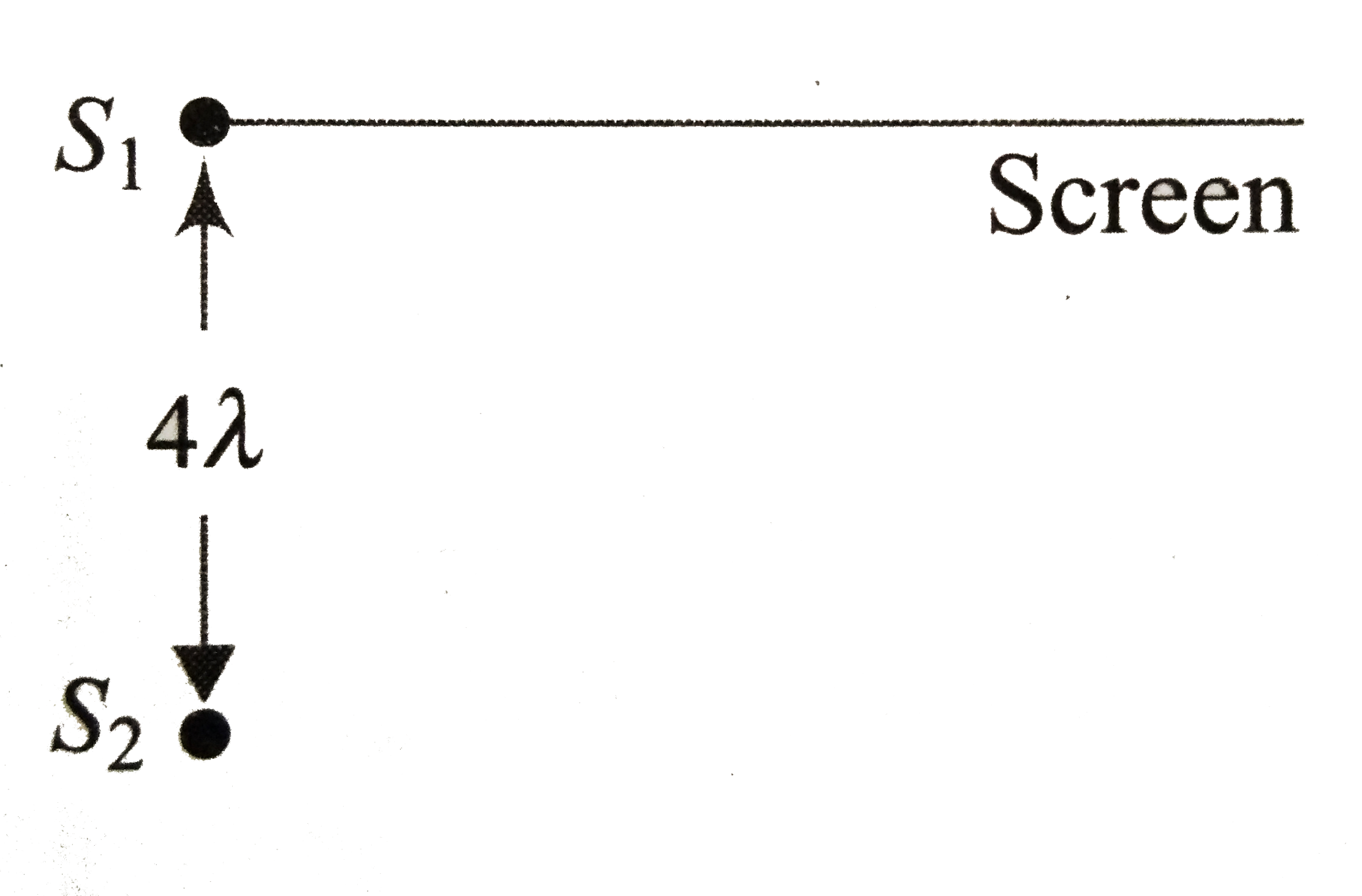Statement I: For the situation shown in figure two identecal coherent light sources produce interference pattern on the screen. The intensity of minima nearest to S1 is not exactly zero.

Statement II: Minimum intensity is zero, when interfering waves have same intensity at the location of superposition.
Statement I is True, statement II is True, Statement II is a correct explanation for Statement I.
Statement I is Ture, Statement II is Ture, Statement II is NOT a correct explanation for Statement I.
Statement I is True, Statement II is False.
Statement I is False, Statement II is True.
The correct Answer is:a
At the location of minima, two waves have different intensities and hence minimum intensity is not exaclty zero.
Topper's Solved these Questions
- WAVE OPTICSBOOK - CENGAGE PHYSICSCHAPTER - WAVE OPTICSEXERCISE - Linked Comprehension
88 Videos
- WAVE OPTICSBOOK - CENGAGE PHYSICSCHAPTER - WAVE OPTICSEXERCISE - Integer
3 Videos
- WAVE OPTICSBOOK - CENGAGE PHYSICSCHAPTER - WAVE OPTICSEXERCISE - Multiple Correct
8 Videos
- THERMODYNAMICSBOOK - CENGAGE PHYSICSCHAPTER - THERMODYNAMICSEXERCISE - QUESTION BANK
34 Videos
- WAVESBOOK - CENGAGE PHYSICSCHAPTER - WAVESEXERCISE - QUESTION BANK
38 Videos
Similar Questions
If the amplitude ratio of two interfering choherent waves producing an interference pattern is 0.5, what is the ratio of the minimum intensity to maximum intensity?
View SolutionTwo coherent sources produce waves of different intensities which interfere. A fter interference, the ratio of the maximum intensity to the minimum intensity is 16. The intensity of the waves are in the ratio :
View Solution
Knowledge Check
Two coherent sources of intensity ratio 1:4 produce an interference pattern. The fringe visibility will be
A(a) 1B(b) 0.8C(c) 0.4D(d) 0.6In terms of the ratio r of the amplitudes of two coherent waves producing an interference pattern, the ratio of the intensity maximum to intensity minimum in the pattern is
Ar+1r−1Br−1r+1C(r+1r−1)2D(r−1r+1)2Two coherent light beams of intensities I and 4I produce interference pattern. The intensity at a point where the phase difference is zero, will b:
AIB4IC5ID9I
Two coherent sources produce waves of different intensities which interfere. A fter interference, the ratio of the maximum intensity to the minimum intensity is 16. The intensity of the waves are in the ratio :
View SolutionTwo identical coherent waves each of intensity I0 are producing interference pattern. What are the values of resultant intensity at a point of (i) constructive interference (ii) destructive interference ?
View SolutionTwo coherent sources of intensities I1 and I2 produce an interference pattern. The maximum intensity in the interference pattern will be
View SolutionTwo identical coherent sources are used to perform interference experiment. Intensity of light at the point of maxima is found to be I0. If one of the slits is closed, then what will be intensity of light at the same point?
View SolutionThe intensity ratio of two coherent sources of light is p. They are interfering in some region and produce interference patten. Then the fringe visibility is
View Solution
